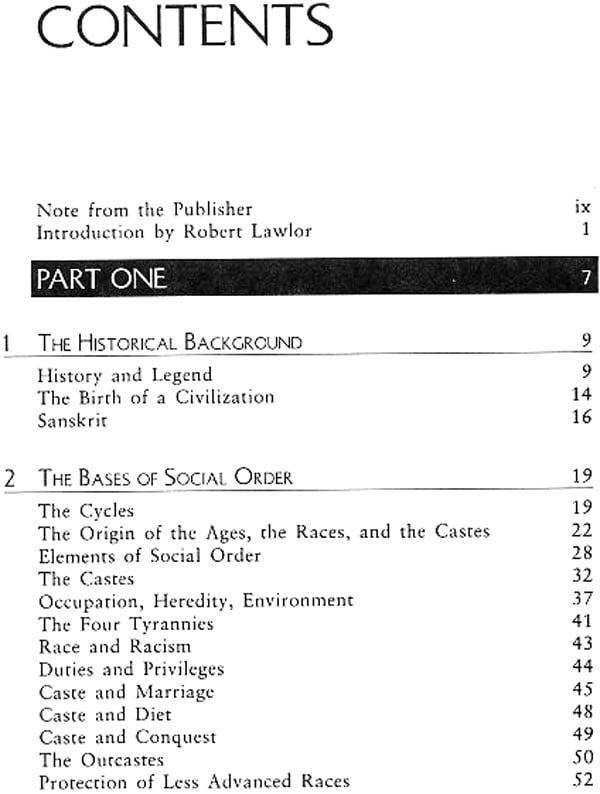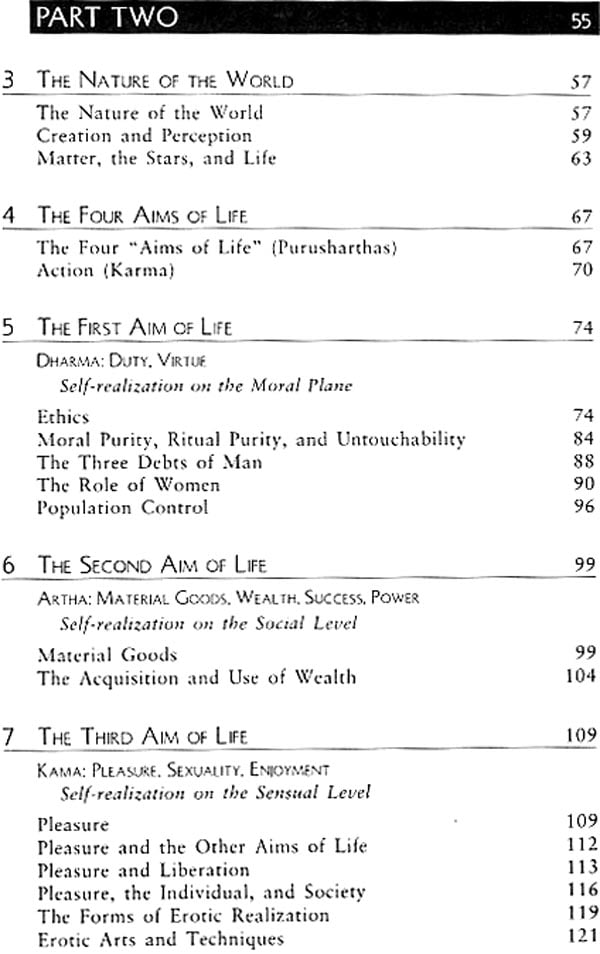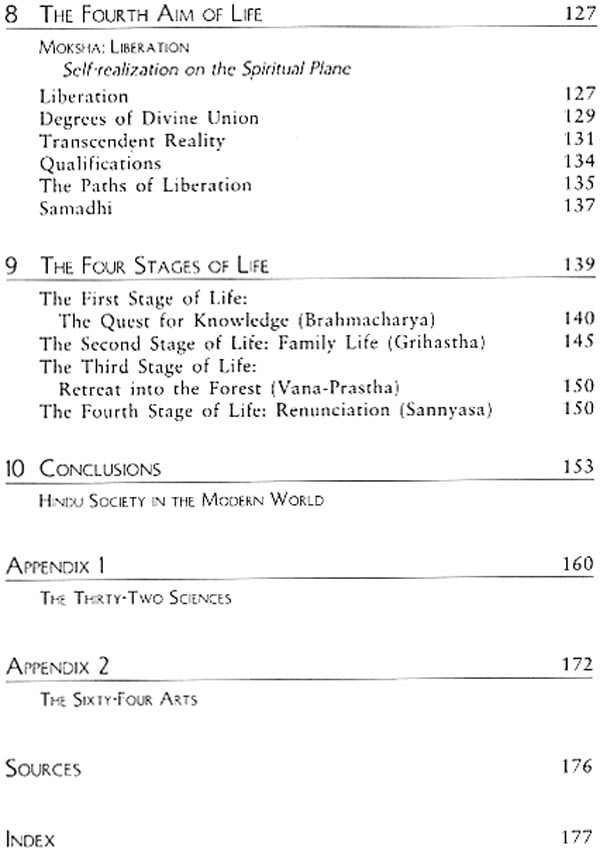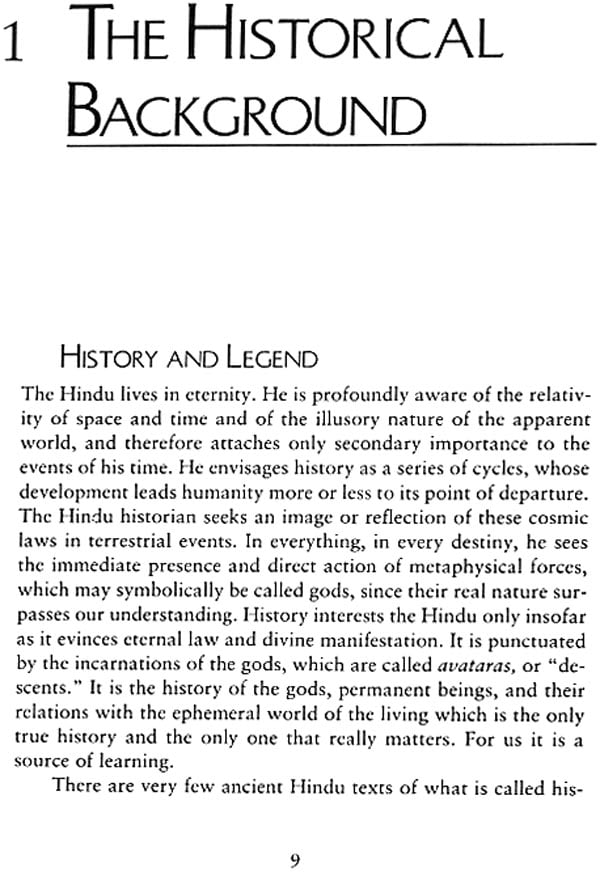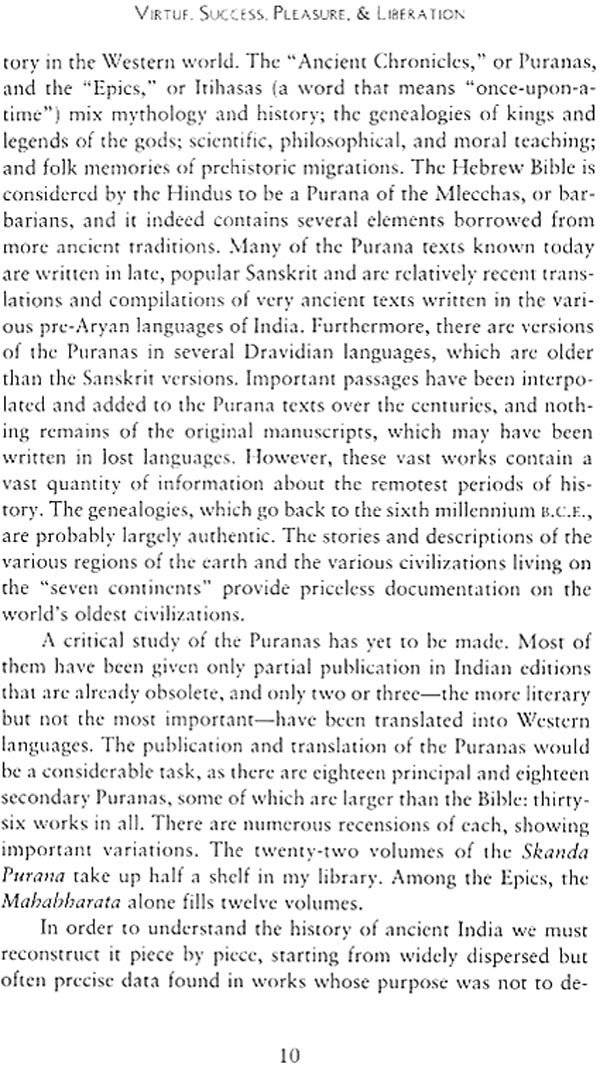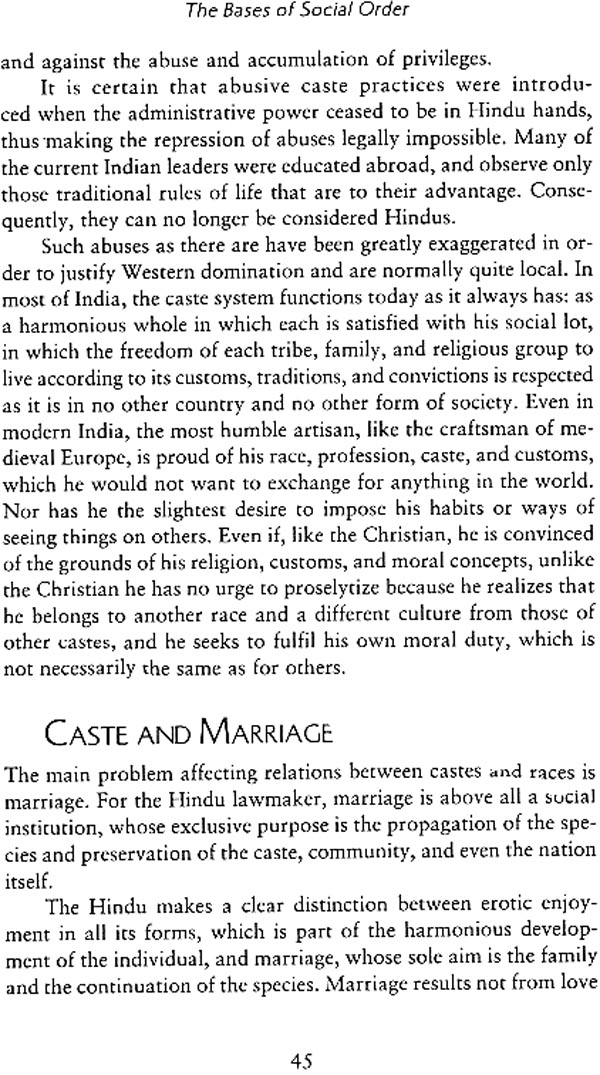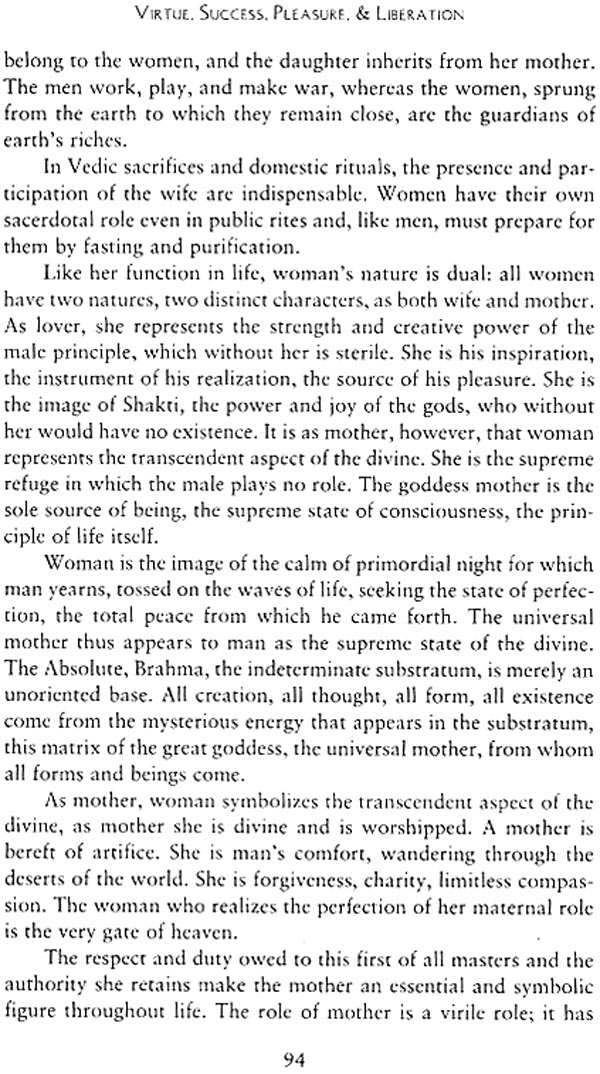
Virtue, Success, Pleasure, Liberation - The Four Aims of Life in The Tradition of Ancient India
Book Specification
| Item Code: | NAR051 |
| Author: | Alain Danielou |
| Publisher: | Inner Traditions, Vermont |
| Language: | English |
| Edition: | 1993 |
| ISBN: | 9780892812189 |
| Pages: | 192 |
| Cover: | PAPERBACK |
| Other Details | 9.00 X 6.00 inch |
| Weight | 300 gm |
Book Description
What is the nature of the social order that unquestionably produced one of the greatest and longest lasting civilizations known to humankind? Alain Danielou, distinguished Orientalist, musicologist, and linguist, reveals the foundations of India’s culture and the four aims of human life as they are viewed in traditional Hindu society: virtue on a moral plane; success on the material and social planes; pleasure on a sensual plane; an liberation on a spiritual plane, Coexistent with these aims are the four stages of life: quest for knowledge, family life, retreat into the forest, and renunciation.
A four fold division can be found in all traditional societies throughout the world, symbolically representing the progression of creative consciousness into order that differs profoundly from those accepted in the contemporary Western addresses issues of race, individual rights, sexual mores, marital practices, and spiritual attainments. In this light, he exposes the inherent flaws and hypocrisies or our modern egalitarian governments and shows how the shadow side of the ancient caste system persists, disguised and unacknowledged, beneath contemporary economic regimes. Danielou explains how Hindu society has served as a model for the realization of human potential on many levels, addressing sociological and human problems that are both timeless and universal.
Virtue, Success, Pleasure, and Liberation is an unusual work: it is an intricately conceived, extended metaphor. It might be called a "metaphoric gestalt" that expands into an innovative and revela¬tory conceptual system in which human social order, spiritual unfoldment, and biological development are all set in a cohesive integrated vision, drawn from Alain Danielou's reflections on the an¬cient texts and Sutras describing traditional Hindu society. The development of this metaphoric gestalt is based on the correspondences and relationships that spring from a natural fourfold divi¬sion in seemingly unrelated areas of human experience:
The four stages of biological development: childhood, youth, maturity, old age
The four seasons of the year: spring, summer, autumn, winter
The four areas of human accomplishment: virtue/devout¬ness, success/material acquisition, nobility/aesthetic and sensual refinement, knowledge and detachment/spiritual liberation
The four racial colors of humanity related to the four earth pigments: black, yellow, red, white
The four castes of traditional society: the worker/artisan, the producer/merchant, the warrior/aristocrat, the scholar/priest/mystic
The four elements of traditional philosophy: earth, air, fire, water
The four spatial directions: south, east, west, north
In all traditional societies throughout the world, though the details may vary, this fourfold division can be found. Without exception it symbolically represents the foundational order required for the creative consciousness to structure itself into a physical reality. The traditions that maintain the philosophy of fourfold order of physical manifestation are diverse in time and location. They range from Australian aborigines to Native Americans to tribal Africans to Chinese and Japanese Taoists to the peoples of ancient India and Egypt to Sufi mystics to medieval alchemists and to European Renaissance humanists and architects. The same four-fold pattern reappears in the content of contemporary science: the four major fields of force, the four elements basic to organic sub-stance, the four geological types of rock, the four major tissue types of the body.
The method of developing an analogic or metaphoric structure based on a numerical form pattern such as duality, trinity, or quaternion is a fundamental procedure in all esoteric philosophy. In fact, the further back one reaches in history and prehistoric cultures the more one finds that language and symbolism rely upon number/form analogy and are increasingly metaphoric in ex-position. Historically, we can view a gradual decline in the metaphoric nature of language. Shakespeare, standing at the threshold of the major conceptual shifts that occurred in the seventeenth century, foresaw the tragic fall of language into the rigid mold of objectivism and logical positivism. To Shakespeare this marked a foreboding and ominous destiny for mankind, particularly European culture.
The Sanskrit text from which Alain Danielou draws his research are of this pure analogous' dynamic. Metaphor and analogy function on one and the same principle: the understanding or experiencing of one kind of thing in terms of another. Very often, in modern language, this entails a process of thought in which a non-material experience or process is understood in terms of a physical one that bears some similarity to the former. For example, the statement "He attacked every weak point in my argument" is based on the metaphoric analogy of an immaterial process (argument) understood in terms of physical combat (war). This linguistic habituation, of understanding and depicting immaterial experience from objects and examples in the physical world, we have retained, as a vestige, from the view of reality that prevailed before the Age of Reason and the scientific revolution. Before this profound shift, which definitively separated the inner and subjective from the external and objective, the world was imaged as manifestations of one indivisible reality appearing in its visible and invisible forms. The condition of the human body, likewise, was considered the visible appearance of one's mind and spirit, just as mental activity was an expression of the individual's way of sensing his physical embodiment.' Language, in this world view, was the field in which these inner and outer processes and images were brought into confrontation and relationship and where one could track the unlimited potential of metamorphosis, back and forth, between visible and invisible experience.
Since the reign of science and logical positivism, language has been considered to have a completely different function. The process of language is to achieve, in words, a precise descriptive "fit" with what is considered a separate, objective, external reality. With this focus we forget the hidden metaphoric origin of language. For example, we can make what we consider a purely factual statement: "She fell asleep but fortunately woke up in time to avoid an accident." This simple statement contains several unacknowledged metaphors of spatial orientation: "conscious is up" (woke up) and "unconscious is down" (fell asleep)? These and innumerable other hidden metaphoric processes become unacknowledged beliefs and biases within our culture. Of course, the "conscious is up" and "unconscious is down" metaphors are based on bodily experiences: we normally tend to lie down or fall over in an unconscious state, and we do spend much of our conscious time in an upright pos-ture.3 However, this is only an external and singular perspective. From another point of view, an internal one, unconscious states such as sleep, dreams, reverie, meditation, and trance can be our most expanded and elevated moments, whereas active awake consciousness is very often our most grounded, confined, and mechanical mode.
Modern language and modern conceptualization are dependent upon unacknowledged metaphoric gestalts in which an invisible world of experience is reduced to, and understood in terms of, physical objects. We routinely convert intangible time, duration, and events into objects; thoughts and ideas become substance; states of being and emotion are transformed into material containers.
**Contents and Sample Pages**
